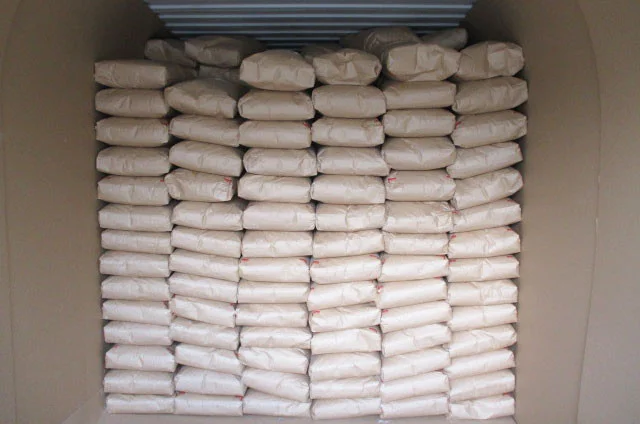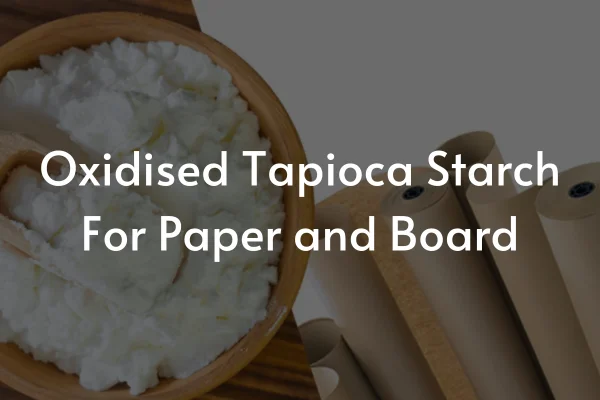
Native Tapioca Starch vs Modified Tapioca Starch: What are differences?
- Home
- Tapioca Starch Products
- Native Tapioca Starch vs Modified Tapioca Starch: What are differences?
Native tapioca starch is a versatile ingredient widely used in the culinary world, especially in products like noodles, sauces, and desserts. Extracted from the cassava root, tapioca starch comes in two main forms: native tapioca starch and modified tapioca starch. Despite their similar appearance, these two types of starch differ in significant ways. In this article, we'll explore these differences to help you better understand their unique properties and uses.
What is Native Tapioca Starch?
Native tapioca starch , which is also called cassava starch and manioc starc, is a natural carbohydrate extracted from the roots of the cassava plant (Manihot esculenta). It is the purest form of tapioca starch, which has not undergone any chemical or physical modifications.

Tapioca Extraction Process:
- Harvesting: Cassava roots are harvested from the cassava plant.
- Cleaning: The roots are thoroughly washed to remove dirt and impurities.
- Peeling: The outer skin of the cassava roots is peeled off.
- Grinding: The peeled roots are ground into a pulp.
- Separation: The starch is separated from the pulp through a process of washing and sieving.
- Drying: The extracted starch is then dried to produce fine, white starch powder.
Characteristics:
- Appearance: Fine, white powder.
- Flavor: Neutral, bland taste that does not affect the flavor of foods.
- Gel Properties: Excellent gelling and thickening properties, forming a clear gel when cooked with water.
- Impurities: Contains very low residual impurities.
Functional Properties:
- Thickening Agent
- Binding Agent
- Stabilityilizer
Applications:
- Culinary Uses: Widely used in cooking and baking for thickening, binding, and moisture retention in dishes like soups, sauces, puddings, and gluten-free recipes.
- Food Industry: Used in the production of noodles, confectionery, and snack foods.
- Non-Food Uses: Although limited, it can be found in some non-food applications where unmodified starch is sufficient.
Limitations:
- Sensitivity: Native tapioca starch is sensitive to environmental conditions such as heat, acidity, and mechanical stress, which can affect its functionality in certain applications, that's why tapioca starch modification evolves.
- Shelf Life: Can have a shorter shelf life compared to modified starches due to its natural state.

Native tapioca starch is a versatile and essential ingredient in both home cooking and various food industries, valued for its natural thickening and gelling properties. However, its application is often limited by its inherent instability under certain conditions, leading to the development of modified starches to meet more demanding industrial needs.
Common Specification of Native Tapioca Starch
Appearance: White powder
Moisture: Max 14%
Starch Content: Min 85%
Viscosity: Min 700BU
pH: 5.0 - 7.0
SO2: Max 30ppm
Whiteness: Min 90%
Slurry residue: Max 0.10%
Ash: Max 0.2%
What is Modified Tapioca Starch?
Tapioca starch modification is a method of producing modified tapioca starch by physically, chemically, or enzymatically modifying native starch under certain conditions. A modified tapioca starch is modified to allow the starch to function properly under common conditions during processing or storage, such as high heat, high shear, low pH, freeze and cooling. Modified tapioca starch is used as a thickening agent, stabilizer, or an emulsifier.

How Native Tapioca Starch is Modified
Physically-modified cassava starch
Physically-modified cassava starch, often referred to as physically-altered tapioca starch, involves the transformation of tapioca starch through various physical processes such as heating, cooling, and drying. The goal is to enhance the functionality and versatility of tapioca starch for a wide range of applications, particularly in the food industry.
Physically-modified cassava starch, particularly pregelatinized tapioca starch (alpha starch, cold-swelling tapioca starch) , offers enhanced functionality and versatility. Its applications range from improving the texture and consistency of food products to serving as an effective binder in charcoal briquette production, animal feed, etc.

Chemically-modified cassava starch
Another method used to modify tapioca starch is through chemical processes. Examples of chemically-altered tapioca starch types include hydroxypropylated starch, acetylated starch, and cross-linked starch. These modifications alter the physical and chemical properties of the starch, resulting in improved stability, texture, and thickening capabilities.

Some examples of Chemically altered tapioca starch
Acetylated Starch (E1420)
Distarch Phosphate (E1412)
Oxidised Starch (E1404)

Dual-modification tapioca starch
Alongside the chemically modified starch, dual-modification tapioca starch is another variant that deserves attention. Dual-modification tapioca starch undergoes additional modifications that further enhance its properties. Dual modification results in a starch with increased resistance to heat, acidity, and shearing. The versatility and superior qualities of Vietnam's modified cassava starch make it a valuable ingredient for a wide range of food products, including sauces, dressings, soups, and confectioneries.

Some examples of tapioca starch with Dual Modification
Acetylated Distarch Phosphate (E1414)
Acetylated Distarch Adipate (E1422)

Vietnam common modified manioc starch list
Not only being one of leading producers in Native tapioca starch, Vietnam is renowned for its high-quality modified cassava starch, making it a perfect choice for those looking to purchase tapioca starch in bulk.
Check out this list to find out your expected modified cassava starch in Vietnam:
Pregelatinized starch (Alpha starch), a cold-swelling tapioca starch
Acetylated starch (E1420)
Distarch phosphate (E1412)
Acetylated distarch phosphate (E1414)
Acetylated distarch adipate (E1422)
Pregelatinized acetylated distarch adipate (Pregel E1422)
Cationic starch
Maltodextrin

B Sky - Be Your Tapioca Starch Solutions
If you are looking for Vietnam affordable-quality tapioca starch with:
- Food grade (Low SO2 starch)
- Standards: ISO, SMETA, HACCP, HALAL, KOSHER, FSSC, USFDA
- Diverse customization: 20/25/50kg PP/paper bag, 850kg jumbo bag…
Please feel free to contact us directly at:
- Whatsapp/Wechat: +84 98 352 45 99
- Email: marketing@viegoglobal.com
- Website/Blog: www.vietnamtapiocastarch.vn
Related Articles
Oxidised Tapioca Starch For Paper and Board: A Great Bonding Solution
Which tapioca starch for paper industry is the questions that has received many concerns from world ...
Modified Starch For Tapioca Boba Pearls: Acetylated Starch Tapioca Base E1420
Modified starch for tapioca boba pearls is a type of starch that has been chemically modified to ...
How To Make Charcoal Briquette with Tapioca Starch
How to make charcoal briquette with tapioca starch is a question of many charcoal manufacturer. ...
Vietnam Modified Tapioca Starch For Dairy Products
Vietnam modified tapioca starch for dairy products is increasingly being utilized in the milk-based ...
Vietnam Modified Tapioca Starch for Gummy Candy
Modified Tapioca Starch for Gummy Candy has been received a great attention from confectionary ...
Vietnam Modified Tapioca Starch For Instant Noodles
Modified Tapioca Starch for Instant Noodles has received great attention from manufacturers. Its ...






